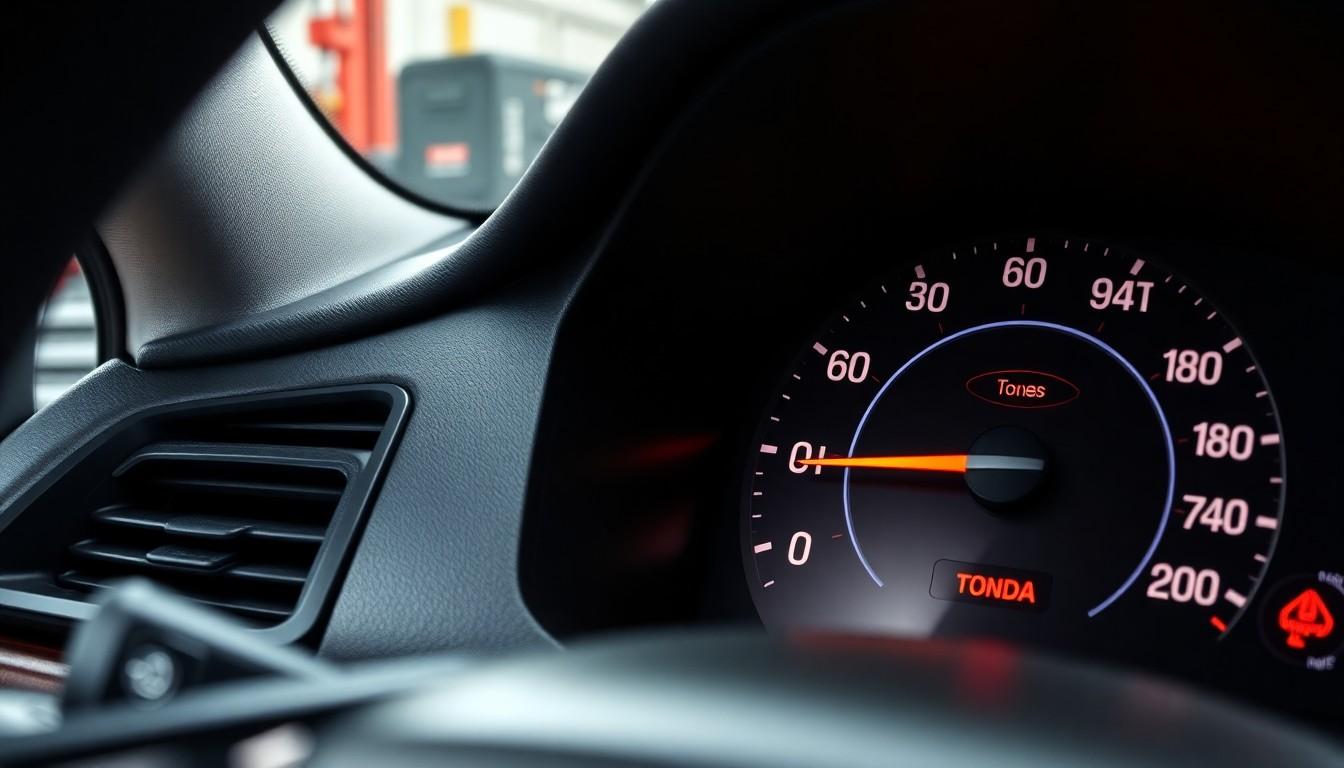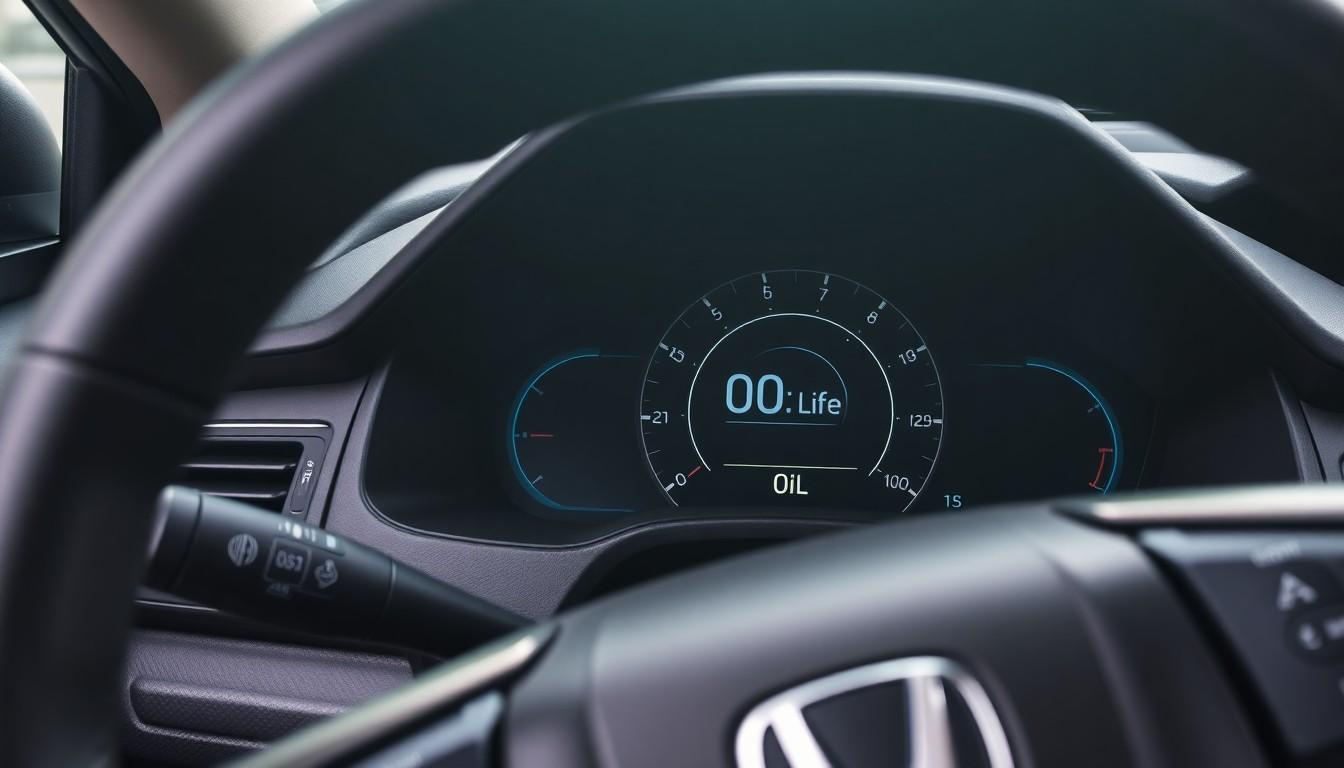Maintaining your Honda CR-V’s engine oil is crucial for its performance and longevity. But once you’ve completed that oil change, there’s one more important step—resetting the engine oil life indicator. This simple yet vital process ensures your vehicle’s monitoring system stays accurate and prevents those annoying false maintenance warnings.
We’ve helped thousands of Honda owners navigate this quick procedure, and it’s surprisingly easy once you know the right steps. Whether you’re a DIY maintenance enthusiast or just trying to save a trip to the dealership, learning how to reset your CR-V’s oil life indicator is a valuable skill that takes less than a minute to master.
Understanding Honda CR-V’s Oil Life Monitoring System
Honda’s CR-V comes equipped with an intelligent oil life monitoring system that tracks multiple factors to determine when an oil change is necessary. This advanced system, known as the Maintenance Minder, eliminates guesswork and helps owners maintain their vehicle properly.
How the System Calculates Oil Life
The oil life monitoring system in Honda CR-Vs uses sophisticated algorithms to track various operating conditions. Engine revolutions, operating temperatures, and driving patterns are continuously monitored by onboard sensors to determine oil degradation rates. Short trips and stop-and-go traffic accelerate oil deterioration, while highway driving at consistent speeds extends oil life. The system also factors in external temperature conditions, as extreme heat or cold affects oil performance differently.
Unlike older vehicles that relied solely on mileage-based maintenance schedules, the CR-V’s system provides a real-time assessment based on actual usage. This ever-changing calculation appears as a percentage on your dashboard display, starting at 100% with fresh oil and gradually decreasing until it reaches 15%, at which point the system will display a maintenance message.
Benefits of the Maintenance Minder System
The Maintenance Minder system offers CR-V owners several practical advantages over traditional maintenance schedules. Cost savings rank among the top benefits, as owners avoid unnecessary oil changes based on arbitrary mileage points. Many drivers save $75-150 annually by optimizing their maintenance intervals according to actual needs.
Environmental impact reduction is another important advantage, with fewer oil changes meaning less waste oil entering the network. The system enhances engine protection by ensuring oil changes occur exactly when needed, not too early or too late. This precision timing extends engine life and maintains optimal performance throughout ownership.
The dashboard display provides clear notifications about upcoming maintenance needs, allowing owners to plan service appointments conveniently. Also, the system tracks multiple maintenance items simultaneously, alerting owners when other services like tire rotations or air filter replacements are due alongside oil changes.
When to Reset Your Honda CR-V’s Oil Life Indicator

Understanding when to reset your Honda CR-V’s oil life indicator is crucial for maintaining accurate maintenance records and ensuring your vehicle performs at its best. The indicator needs to be reset at exact times to keep the Maintenance Minder system functioning correctly.
After Regular Oil Changes
Resetting the oil life indicator is essential immediately after each oil change in your Honda CR-V. This reset ensures the system accurately tracks when your next oil change is due and prevents false maintenance alerts from appearing on your dashboard. Every time fresh oil is added to your vehicle, the monitoring system requires manual recalibration to start the countdown from 100% again. Neglecting this reset can lead to premature maintenance warnings or, conversely, missing necessary oil changes if the system isn’t properly synchronized with your actual maintenance schedule.
Following Major Service Intervals
Major service intervals that affect your engine’s oil condition also necessitate resetting the oil life indicator. These intervals include important engine repairs, extensive maintenance work, or other substantial mechanical interventions that impact oil quality. Your CR-V’s oil life percentage should reflect the current state of your engine oil after such services are completed. For example, if you’ve had work done that involved draining and replacing the oil during transmission repairs or engine overhauls, resetting the indicator ensures all maintenance systems are properly synchronized. This keeps your Honda’s sophisticated Maintenance Minder system accurately tracking all service needs simultaneously.
Step-by-Step Guide to Reset Honda CR-V Oil Life

Resetting the oil life indicator on your Honda CR-V keeps your maintenance records accurate and prevents unnecessary service alerts. The reset process varies depending on your CR-V’s model year, with newer and older models having different procedures.
Using the Steering Wheel Controls (Newer Models)
For Honda CR-V models from 2017 and later, the oil life reset process utilizes the steering wheel controls. Start the engine and press the brake pedal, ensuring your vehicle is in park or neutral. Access the information display by pressing the “Information” button on the steering wheel until menu options appear on your dashboard. Navigate through the menu options using the arrow buttons until you locate the wrench icon (maintenance menu), then press “Enter” to select it. Scroll down to the “Oil Life” option and press “Enter” again to view the current percentage. Hold the “Enter” button for approximately 5 seconds until a reset screen appears. Use the arrow buttons to select “Reset” or “Reset All” for all service items, then press “Enter” to confirm your selection.
Using the Information Display (Older Models)
The reset procedure for 2007-2016 Honda CR-V models differs significantly from newer versions. For 2007-2011 models, turn the ignition switch to the “On” position without starting the engine. Use the Select/Reset knob to cycle through display options until the “Oil Life” percentage appears. Press and hold the Select/Reset knob for 15-20 seconds until the oil life percentage begins blinking. Release the knob, then press it again to select the “Oil Life” option while it’s flashing. Hold the knob once more for a few seconds until the percentage resets to 100%.
For 2012-2016 CR-V models, press the “Home” button and select “Vehicle” from the menu. Navigate to the “Engine Oil Life” option using arrow buttons or the Select/Reset knob. Press and hold the Select/Reset knob until the oil life percentage starts blinking. Release the knob, press it again to select the reset option, then hold it for a few seconds until the display shows 100%.
Common Issues When Resetting Oil Life on Honda CR-V

Even with straightforward instructions, Honda CR-V owners occasionally encounter problems when attempting to reset their engine oil life indicator. Understanding these common issues will help you troubleshoot effectively and complete the reset process without frustration.
Incorrect Menu Navigation
Navigation errors frequently prevent successful oil life resets in Honda CR-Vs. Many owners struggle to locate the correct menu, especially in newer models with multiple dashboard displays and settings. Always ensure you’re in the vehicle settings or exact oil life display before attempting a reset. For 2017-2022 models, start by selecting the “Home” button, then navigate to “Vehicle” settings before accessing the engine oil life option. If you’re not in the proper menu section, the reset process simply won’t work regardless of which buttons you press.
Not Holding the Button Long Enough
Insufficient button press duration is a primary reason for failed reset attempts. The reset process typically requires holding the Select/Reset button for 10-20 seconds until the oil life percentage starts flashing. Many owners release the button too soon, believing the brief press is sufficient. For older CR-V models (2007-2011), you must hold the knob for approximately 15-20 seconds until the display begins to flash, then release and press again to complete the reset. Patience during this step is crucial for successful resets.
Display Not Responding
Unresponsive displays create important frustration during the reset process. If your dashboard display doesn’t blink or respond when attempting the reset, check your vehicle’s battery charge status as low power can affect system functionality. Electrical issues within the vehicle’s system might also prevent proper display response. Intermittent electrical problems sometimes cause the display to freeze or become unresponsive during the reset procedure. Turning the vehicle completely off and restarting it might resolve temporary display glitches.
Reset Not Saving
Reset completion problems occur when the system fails to save your changes. After completing all reset steps, verify that the oil life percentage displays 100%. If the system reverts to the previous percentage, you’ll need to repeat the entire process more carefully. Some users report needing multiple attempts before the reset successfully saves. Persistent failures to save the reset might indicate deeper system malfunctions requiring professional attention.
Model-Exact Issues
Model year variations create confusion during the reset process. The 2007-2011 CR-Vs use a Select/Reset knob approach, while 2017-2022 models use a different menu-based system with the “Home” button. Using instructions meant for a different model year than your vehicle often leads to reset failures. Always confirm you’re following the correct procedure exact to your Honda CR-V’s year and dashboard configuration to avoid unnecessary complications.
Troubleshooting Reset Failures
Owner’s manuals provide the most accurate reset instructions customized to your exact CR-V model. When experiencing persistent reset problems, consulting your manual should be your first troubleshooting step. The manual contains detailed, model-exact information that online guides might not cover.
Professional assistance becomes necessary for stubborn reset issues. If multiple reset attempts fail, Honda service centers can diagnose underlying system problems using specialized diagnostic equipment. Technicians can determine if there’s a malfunction with the oil life monitoring system itself rather than a simple reset error.
Oil quality factors sometimes impact reset functionality. The system may resist resetting if it detects problems with the oil level or quality after an oil change. Ensure your oil change was completed properly with the correct oil type and that the oil level meets specifications. Using non-recommended oil or having improper oil levels can sometimes prevent the system from resetting correctly until these issues are addressed.
Maintaining Your Honda CR-V Beyond Oil Changes

Regular maintenance extends your Honda CR-V’s lifespan and ensures optimal performance beyond just oil changes. Proper care of all vehicle components creates a smoother driving experience and prevents costly repairs down the road.
Recommended Maintenance Schedule
Honda’s Maintenance Minder system provides personalized service reminders based on your CR-V’s actual operating conditions. Oil changes typically occur every 5,000 to 7,500 miles, varying with driving habits and conditions. Tire pressure checks should be performed monthly and before any long trips to maintain proper inflation. Rotating tires every 5,000 to 8,000 miles ensures even wear and extends tire life.
Brake pads require inspection every 10,000 to 15,000 miles to guarantee safe stopping power. Battery condition checks every 6 months help prevent unexpected failures, especially during extreme weather. Air filters need replacement every 15,000 to 30,000 miles to maintain proper engine airflow. Spark plugs last between 30,000 and 100,000 miles depending on the type installed in your vehicle.
The Honda Maintenance Minder uses exact codes to indicate required services. Code A signifies an oil change is needed, while Code B indicates more comprehensive service including oil filter replacement. Numeric codes (1, 2, etc.) represent additional maintenance items like tire rotation, air filter replacement, or brake service. Following these manufacturer-recommended intervals keeps your CR-V running efficiently for years.
Conclusion
Resetting your Honda CR-V’s engine oil life indicator is a simple yet essential maintenance task that helps maintain your vehicle’s monitoring accuracy. By understanding how to properly reset this system after each oil change, you’re ensuring your Maintenance Minder continues to provide reliable service reminders.
This straightforward process differs slightly between model years, but we’ve covered all the necessary steps to make it accessible regardless of which CR-V you drive. Remember that proper oil maintenance combined with timely resets will keep your vehicle performing optimally while preventing unnecessary service visits.
Taking control of this aspect of your CR-V’s maintenance isn’t just convenient—it’s a smart way to protect your investment and keep your Honda running smoothly for years to come.
Frequently Asked Questions
Why is it important to reset the oil life indicator in a Honda CR-V?
Resetting the oil life indicator after an oil change ensures the vehicle’s monitoring system remains accurate. This prevents false maintenance alerts and keeps the Maintenance Minder system functioning correctly. Without resetting, your CR-V might display incorrect oil life percentages, potentially leading to unnecessary service visits or missing important maintenance intervals.
How does the Honda CR-V’s Maintenance Minder system work?
The Maintenance Minder is an intelligent system that tracks engine revolutions, operating temperatures, and driving patterns to determine oil life. It displays the remaining oil life as a percentage on your dashboard and notifies you when maintenance is needed. This system eliminates guesswork, prevents unnecessary oil changes, reduces environmental waste, and helps maintain optimal engine protection.
When should I reset the oil life indicator?
Reset the oil life indicator immediately after each oil change to maintain accurate maintenance records. You should also reset it after major service intervals that affect engine oil condition, such as significant repairs or maintenance work. Proper synchronization ensures the Maintenance Minder system accurately reflects your engine’s current oil state and effectively tracks all service needs.
How do I reset the oil life in a 2017 or newer Honda CR-V?
For 2017 and newer models: 1) Turn on the ignition without starting the engine. 2) Use the steering wheel controls to navigate to “Vehicle Settings” on the information display. 3) Select “Maintenance Info” then “Oil Life.” 4) Press and hold the ENTER button until the reset confirmation appears. 5) Select “Yes” to confirm the reset.
What’s the process for resetting oil life in older CR-V models (2007-2016)?
For 2007-2016 models: 1) Turn the ignition to ON (don’t start engine). 2) Press the Select/Reset knob until the oil life indicator appears. 3) Press and hold the knob for about 10 seconds until the display begins to blink. 4) Press the knob again while the display is blinking to reset to 100%. Specific steps may vary slightly by year.
What common issues might I encounter when resetting the oil life indicator?
Common issues include incorrect menu navigation, insufficient button press duration, unresponsive displays, and reset completion problems. Make sure to follow model-specific instructions carefully and consult your owner’s manual if you experience difficulties. If problems persist, professional assistance may be needed to diagnose potential system malfunctions.
How often should I change the oil in my Honda CR-V?
Following the Maintenance Minder system, most Honda CR-Vs need oil changes every 5,000 to 7,500 miles under normal driving conditions. However, the exact interval depends on your specific driving habits and conditions. The system will alert you when it’s time for an oil change by displaying a maintenance code that includes “A1” when oil service is required.
What other regular maintenance does my Honda CR-V need?
Beyond oil changes, regularly check tire pressure monthly, rotate tires every 5,000-8,000 miles, inspect brake pads every 10,000-15,000 miles, check battery condition every six months, and replace air filters every 15,000-30,000 miles. The Maintenance Minder will also alert you to other needed services through specific maintenance codes displayed on your dashboard.

